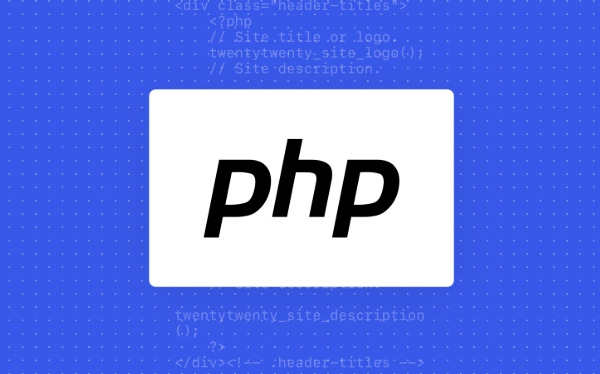Phalcon is the fastest PHP framework, followed by Laminas and Slim. Phalcon compiles in C extensions, with the highest performance; Laminas enables lightweight and flexibility by loading components on demand; Slim is suitable for building small APIs and services; while Laravel is not the fastest, its rich functionality and ease of use make it efficient and practical enough in most projects.

When it comes to speed, PHP frameworks vary a lot depending on what you're building and how you use them. If you want raw performance with minimal overhead, Laminas (formerly Zend Framework) and Phalcon stand out — especially Phalcon, which is built as a C extension and runs super fast. But speed isn't everything — simplicity, ease of use, and development efficiency also matter.

Lightweight and Fast: Laminas and Phalcon
If you're chasing pure performance, Laminas and Phalcon are your best bets. Laminas is known for being flexible and powerful while still keeping things pretty lean if you use only the components you need. It's not a full-stack framework by default, so you can pick and choose what to include, which helps keep things fast.

Phalcon , on the other hand, is unique because it's compiled as a PHP extension written in C. That means it runs directly inside the PHP kernel without needing extra layers or interpretation at runtime. This makes it incredibly fast out of the box. You don't get as much built-in scaffolding as Laravel, but that's part of why it's so quick.
- Laminas: modular, reusable components
- Phalcon: compiled, low memory usage, high performance
Both are great choices when speed is critical, but Phalcon edges ahead in benchmarks.

Laravel Isn't the Fastest, But Still Good Enough for Most Projects
Let's be honest — Laravel isn't the fastest PHP framework around. It has a lot of features, abstractions, and layers that make development easier but add some overhead. However, for most real-world applications, the difference in speed between Laravel and something like Phalcon is negligible unless you're handling millions of requests per day.
That said, Laravel makes up for it with developer happiness, clean syntax, and a huge ecosystem. If you're building something where development speed matters more than microsecond-level performance, Laravel is still a solid choice.
- Easier to learn and use than Phalcon
- Built-in tools for auth, routing, ORM, queues, etc.
- Performance can be improved with caching and tuning
So while Laravel might not win any speed contests, it's still plenty fast for most use cases — especially when paired with tools like Redis or OPcache.
Micro-Frameworks Like Slim Are Great for APIs and Small Apps
If you're building something lightweight like a REST API or a small service, a micro-framework like Slim could be perfect. These frameworks strip away almost all overhead and give you just the essentials: routing, middleware, and maybe dependency injection.
They're not mean for large apps with lots of business logic, but they shine in scenarios where you want to process HTTP requests quickly and efficiently.
- Very low overhead
- Easy to set up for simple endpoints
- Good for JSON APIs or microservices
Slim, in particular, is well-documented and actively maintained. If your app doesn't need database migrations, queue workers, or complex routing, this is a great option.
Speed ??matters, but it's not the only factor. For most developers, choosing the right tool depends on the project type, team familiarity, and long-term maintenance. If you really care about performance, go with Phalcon. If you want balance and productivity, Laravel still works well. And for tiny services or APIs, Slim or similar micro-frameworks are hard to beat.
Basically that's it.
The above is the detailed content of which php framework is the fastest. For more information, please follow other related articles on the PHP Chinese website!

Hot AI Tools

Undress AI Tool
Undress images for free

Undresser.AI Undress
AI-powered app for creating realistic nude photos

AI Clothes Remover
Online AI tool for removing clothes from photos.

Clothoff.io
AI clothes remover

Video Face Swap
Swap faces in any video effortlessly with our completely free AI face swap tool!

Hot Article

Hot Tools

Notepad++7.3.1
Easy-to-use and free code editor

SublimeText3 Chinese version
Chinese version, very easy to use

Zend Studio 13.0.1
Powerful PHP integrated development environment

Dreamweaver CS6
Visual web development tools

SublimeText3 Mac version
God-level code editing software (SublimeText3)

Hot Topics
 What are some best practices for versioning a PHP-based API?
Jun 14, 2025 am 12:27 AM
What are some best practices for versioning a PHP-based API?
Jun 14, 2025 am 12:27 AM
ToversionaPHP-basedAPIeffectively,useURL-basedversioningforclarityandeaseofrouting,separateversionedcodetoavoidconflicts,deprecateoldversionswithclearcommunication,andconsidercustomheadersonlywhennecessary.StartbyplacingtheversionintheURL(e.g.,/api/v
 How do I implement authentication and authorization in PHP?
Jun 20, 2025 am 01:03 AM
How do I implement authentication and authorization in PHP?
Jun 20, 2025 am 01:03 AM
TosecurelyhandleauthenticationandauthorizationinPHP,followthesesteps:1.Alwayshashpasswordswithpassword_hash()andverifyusingpassword_verify(),usepreparedstatementstopreventSQLinjection,andstoreuserdatain$_SESSIONafterlogin.2.Implementrole-basedaccessc
 What are the differences between procedural and object-oriented programming paradigms in PHP?
Jun 14, 2025 am 12:25 AM
What are the differences between procedural and object-oriented programming paradigms in PHP?
Jun 14, 2025 am 12:25 AM
Proceduralandobject-orientedprogramming(OOP)inPHPdiffersignificantlyinstructure,reusability,anddatahandling.1.Proceduralprogrammingusesfunctionsorganizedsequentially,suitableforsmallscripts.2.OOPorganizescodeintoclassesandobjects,modelingreal-worlden
 What are weak references (WeakMap) in PHP, and when might they be useful?
Jun 14, 2025 am 12:25 AM
What are weak references (WeakMap) in PHP, and when might they be useful?
Jun 14, 2025 am 12:25 AM
PHPdoesnothaveabuilt-inWeakMapbutoffersWeakReferenceforsimilarfunctionality.1.WeakReferenceallowsholdingreferenceswithoutpreventinggarbagecollection.2.Itisusefulforcaching,eventlisteners,andmetadatawithoutaffectingobjectlifecycles.3.YoucansimulateaWe
 How can you handle file uploads securely in PHP?
Jun 19, 2025 am 01:05 AM
How can you handle file uploads securely in PHP?
Jun 19, 2025 am 01:05 AM
To safely handle file uploads in PHP, the core is to verify file types, rename files, and restrict permissions. 1. Use finfo_file() to check the real MIME type, and only specific types such as image/jpeg are allowed; 2. Use uniqid() to generate random file names and store them in non-Web root directory; 3. Limit file size through php.ini and HTML forms, and set directory permissions to 0755; 4. Use ClamAV to scan malware to enhance security. These steps effectively prevent security vulnerabilities and ensure that the file upload process is safe and reliable.
 What are the differences between == (loose comparison) and === (strict comparison) in PHP?
Jun 19, 2025 am 01:07 AM
What are the differences between == (loose comparison) and === (strict comparison) in PHP?
Jun 19, 2025 am 01:07 AM
In PHP, the main difference between == and == is the strictness of type checking. ==Type conversion will be performed before comparison, for example, 5=="5" returns true, and ===Request that the value and type are the same before true will be returned, for example, 5==="5" returns false. In usage scenarios, === is more secure and should be used first, and == is only used when type conversion is required.
 How can you interact with NoSQL databases (e.g., MongoDB, Redis) from PHP?
Jun 19, 2025 am 01:07 AM
How can you interact with NoSQL databases (e.g., MongoDB, Redis) from PHP?
Jun 19, 2025 am 01:07 AM
Yes, PHP can interact with NoSQL databases like MongoDB and Redis through specific extensions or libraries. First, use the MongoDBPHP driver (installed through PECL or Composer) to create client instances and operate databases and collections, supporting insertion, query, aggregation and other operations; second, use the Predis library or phpredis extension to connect to Redis, perform key-value settings and acquisitions, and recommend phpredis for high-performance scenarios, while Predis is convenient for rapid deployment; both are suitable for production environments and are well-documented.
 How do I perform arithmetic operations in PHP ( , -, *, /, %)?
Jun 19, 2025 pm 05:13 PM
How do I perform arithmetic operations in PHP ( , -, *, /, %)?
Jun 19, 2025 pm 05:13 PM
The methods of using basic mathematical operations in PHP are as follows: 1. Addition signs support integers and floating-point numbers, and can also be used for variables. String numbers will be automatically converted but not recommended to dependencies; 2. Subtraction signs use - signs, variables are the same, and type conversion is also applicable; 3. Multiplication signs use * signs, which are suitable for numbers and similar strings; 4. Division uses / signs, which need to avoid dividing by zero, and note that the result may be floating-point numbers; 5. Taking the modulus signs can be used to judge odd and even numbers, and when processing negative numbers, the remainder signs are consistent with the dividend. The key to using these operators correctly is to ensure that the data types are clear and the boundary situation is handled well.






